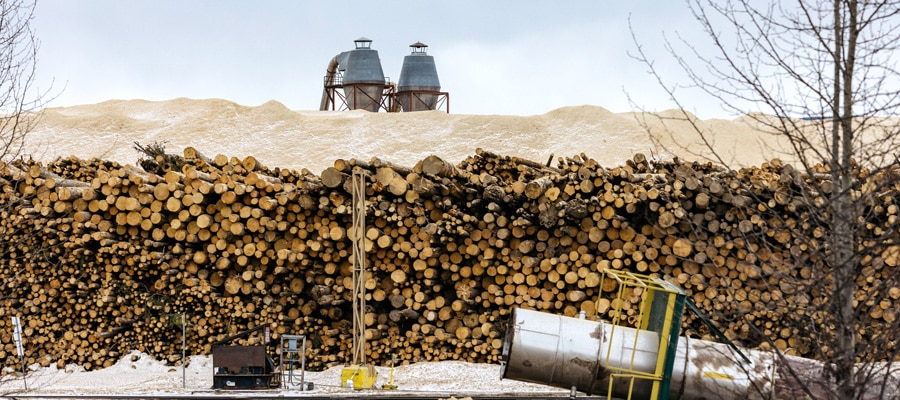BC’s wood trade with China may be booming – but at a price
This year, members of the Lax Kw’alaams First Nation expect to fill the holds of nine ocean freighters in Prince Rupert with raw logs from BC’s north coast – logs that will then be shipped across the Pacific Ocean to ports in China.
The northern coastal Nation has been active in logging for some time, and with its opening of its own trade office in Beijing two years ago has stepped up its direct efforts to boost trade with one of the world’s most rapidly industrializing economies.
Two years after opening that office, as noted in a recent story in the Globe and Mail, one of the largest province-wide aboriginal organizations in the province – the First Nations Summit – along with the Asia Pacific Foundation of Canada has unveiled an initiative aimed at emulating the Lax Kw’alaams example.
“The First Nations-China Desk is a portal to help native communities gain access to markets for their forestry and fishery products – at a time when China is emerging as a key customer. In May, for the first time, China surpassed the United States in the value of shipments for B.C. lumber exports,” the Globe’s Justine Hunter reported.
For members of an isolated First Nation operating in a region of the province that has witnessed a sharp drop in sawmill and pulp mill jobs in the past decade, an economic development strategy that puts band members to work logging trees and exporting raw logs has some immediate economic benefits that for obvious reasons are attractive.
But more broadly, is aggressive marketing of the lowest value of all forest products – raw logs – along with growing shipments of low-value commodity lumber products to China a wise move for BC’s forest industry and one that provincial government policies ought to promote?
While it is true that the shocking contraction in the US housing market, now entering its fifth year, has been a harsh and stubbornly persistent reality for the province’s forest industry, forest-dependent communities and the provincial government alike, is simply attempting to replace one market with another a wise move? Or is it possibly setting us up for even deeper economic pain down the road?
I believe the answer to the first question is no and the answer to the second question is yes, and I outline why in a new report released today by the BC office of the Canadian Centre for Policy Alternatives – Making the Case for a Carbon Focus and Green Jobs in BC’s Forest Industry. You can check it out here. Or, if you want to, you can read a stripped down version of some of what is in the report in an op-ed of mine published in today’s Vancouver Sun.
What we desperately need and so richly deserve in this province is a new forest policy roadmap. With tens of thousands of forest industry jobs lost over the past decade; with a forest resource showing signs of great stress due to the effects of stupendous insect attacks, increasingly frequent and severe forest fires, unsustainable logging rates and ill-considered reforestation choices; and now, with the with great uncertainties of climate change staring us in the face, we need policies that restore health to our forests and that reinvigorate our decimated forest sector.
The way to do that lies in seriously ratcheting up carefully targeted, publicly funded reforestation efforts and in accepting that now and for the foreseeable future we must extract greater social and economic value from a smaller pool of natural resources. In other words, for each tree we cut we need to produce more jobs and, more to the point, more sustainable jobs. Our government’s and forest industry’s overemphasis on diversifying markets for BC’s forest products outside of the United States and their preoccupation with penetrating the Chinese market in particular is not the way to go if most of what we end up shipping are low-value products that lack distinction on the global stage.
Now, more than ever, we need to embrace product diversification, not market diversification. Happily, there’s plenty of evidence to suggest that BC has considerable room to improve in that regard.
Right now, the province manages to generate one full-time forest industry job for very 1,189 telephone pole’s worth of trees logged. Ontario manages to generate one full-time forest industry job with close to one sixth the wood, while Quebec manages the same feat with about one quarter of the wood volume used in BC.
The irony is that despite having what is still one of the richest forest resources in North America BC is embarrassingly low down the value chain. It’s time to move up several rungs on that chain – before it’s too late.
Topics: Economy, Employment & labour, Environment, resources & sustainability, First Nations & Indigenous


